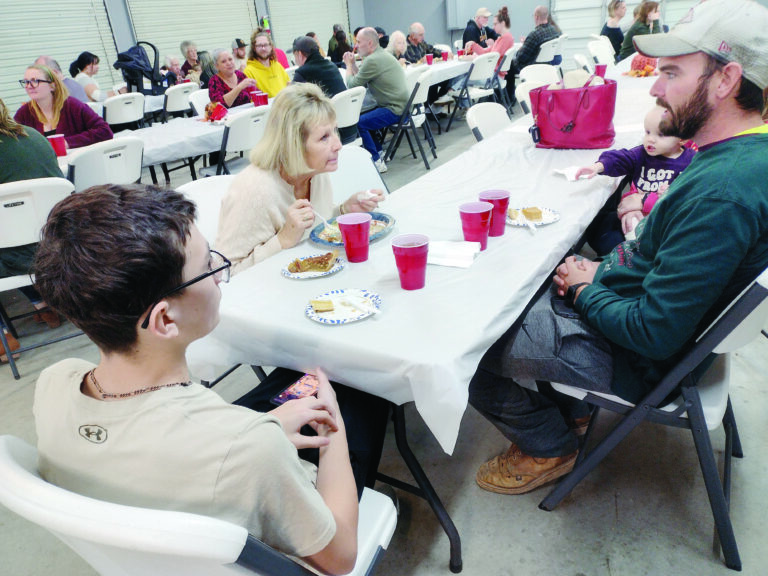Community painting Portrait of a Graduate

BY KYLE TROUTMAN [email protected]
Program aims to improve student outcomes in schools
A collaborative effort between five Barry County school districts is attempting to improve student outcomes, and the project is asking for the community’s help.
Traci Mitchell, Cassville assistant superintendent, said the Portrait of a Graduate (POG) work, which ties to district improvement plans and has been shown to improve student outcomes, reflects the county’s agreed upon competencies necessary for students to be effective and successful mem- bers of the community.
“Through collaborative conversations with Barry County school districts, we wanted to evaluate the needs and demographics across our own communities and the skills needed for students to be successful beyond high school,” Mitchell said. “We also want to know what we, as school districts, are doing well and what we need to reevaluate?”
School and community members work together to build the “portrait,” which helps school districts set clear goals for what students should achieve by the time they graduate.
“It ensures that all classes and activities are geared towards reaching these goals, while also allowing for personalized learning tailored to each student’s strengths and interests,” Mitchell said. “Involving the community, parents and stakeholders in developing this portrait ensures all voices are heard for student success. The portrait also focuses on teaching students skills they’ll need in the future, such as problem-solving, literacy, work ethic, and teamwork.
“Schools can use the portrait to evaluate what’s working well and what needs improvement to tie to district CSIP focus areas, ensuring students are well-prepared for college, careers and life beyond school.”
Cooperating districts will gather data across the area based on workforce development and growth areas, pooling resources, expertise and ideas to develop a more comprehensive and well-rounded plan while sharing insights and experiences.
“Schools can identify common goals and challenges, ensuring that the portrait reflects a broader consensus and meets the needs of all student populations,” Mitchell said. “Additionally, working together fosters a sense of shared responsibility and accountability among our Barry County schools, promoting continuous improvement and innovation in preparing students for future success. This collaborative approach ultimately strengthens the overall educational experience and outcomes for all students involved. We are all in this together.”
To help gather information, a poll has been produced, and those creating the “portrait” are asking for all community members to respond.
“We are encouraging residents and employers from all communities within Barry County to participate,” Mitchell said. “The planning team needs all voices heard in order to create a comprehensive plan that reflects the skills and attributes needed to strengthen our community and workforce.”
Questions for the poll were developed by a team of stakeholders, including representatives from school districts, business leaders, parents and student, all of whom met on June 6 to initiate the program.
“The team held round-table discussions to evaluate current job skills and steps to strengthen community workforce and development,” Mitchell said. “Survey results are anonymous and will be used to improve instructional focus areas and provide guidance for district CSIP goals and initiatives.”
The Barry County survey, will close on July 1 at 5 p.m.
Mitchell said by gathering so much information and setting end goals, using a backward planning model, districts can adjust their Continuous School Improvement Plans and course offerings to help students better plan for their futures.
“As we create our Barry County Portrait of a Graduate, it is imperative to hold all stakeholders including schools, businesses and parents accountable for shaping individuals who are not only academically proficient but also socially responsible and adaptable to the evolving demands of the workforce,” Mitchell said. “This collaborative approach ensures that graduates emerge as well-rounded individuals equipped with critical thinking skills, ethical values, and the ability to collaborate effectively in our community. Schools must commit to innovative teaching methodologies and inclusive curricula that foster lifelong learning, while businesses need to provide opportunities for real-world application and continuous professional development.
“By synchronizing educational objectives with industry needs, we can cultivate a generation of graduates who are prepared to thrive in and contribute meaningfully to our community and economy.”



